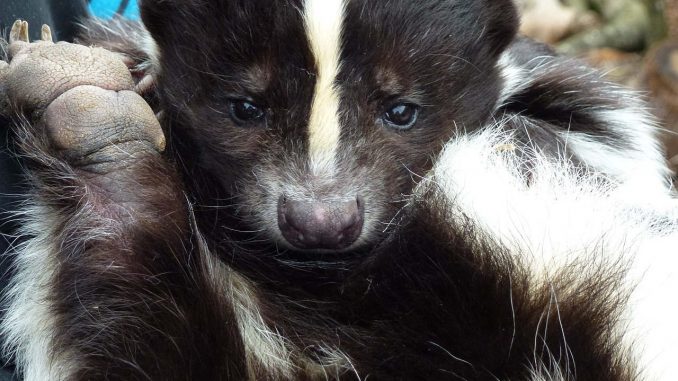
The Eastern Spotted Skunk
The Eastern Spotted Skunk is one of the rarest of the species, with only 400 thought to exist worldwide. These interesting skunks (Sciurus vulgaris) are known as a terrestrial ‘loner’, living in burrows and woodlands, preferring a diet of insects and small rodents. However, they also eat carrion.
The Eastern Spotted Skunk is also known as the Western Brown-sided Skunk or Stumpy-backed Skunk. It is usually white in color with black markings on its back and side, which are spiny “jaws”. The chin is black, and it has short legs. The head is triangular in shape, with large nostrils on the top of the head, and two large round eyes set close together.
Western Brown-sided Skunks can weigh more than twice as much as an average male Eastern Spotted Skunk. However, the two species are similar in size, hence a female can produce at least four litters per year, which are usually three males and three females. The litter size is between one and ten pups, depending on the sex of the mother.
The Eastern Spotted Skunk and the Western Brown-sided Skunk can interbreed and produce hybrid offspring, but the hybrid offspring are not true subspecies of either species. On the other hand, the offspring of the two types are very variable in appearance and are often marked with several characteristic markings that are different from one another. Some individuals will have the blue markings of the Eastern Spotted Skunk, while others may have the markings of the Western Brown-sided Skunk.
Genetic research has shown that the Eastern Spotted Skunk can be easily distinguished from the Western Brown-sided Skunk by the shape of the skulls and the patterns of markings on the skin. At present, a classification system based on these differences has not been agreed upon, and many have claimed to find many differences between the two species. Nonetheless, there is still a great deal of disagreement among scientists about which factors are most important when distinguishing between the two subspecies.
Western populations of both species are endangered due to habitat loss, disease, and other forms of destruction. Although some groups of scientists think that some subspecies of the Eastern Spotted Skunk can be used to study their behavior, since their population densities have not changed significantly in the last few decades, many scientists, including those from the field of wildlife conservation, do not support this theory. Therefore, it is difficult to use the Eastern Spotted Skunk as a model for other species of wildlife.
There is a huge amount of excitement and mystery surrounding the Eastern Spotted Skunk. In the end, what we know for sure is that there are still no other animals in North America which can be considered ‘true’ loners. The Eastern Spotted Skunk is the only species to possess this trait.
